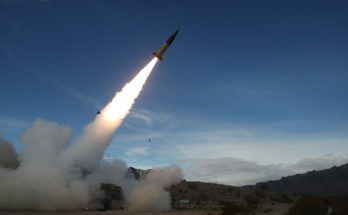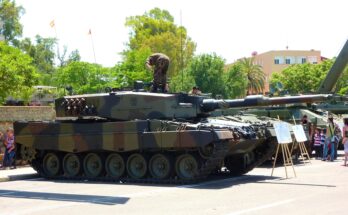A snapshot of recent news from sources around the world on the ongoing Russia-Ukraine war.

Political Developments
Ukrainian President Volodymyr Zelenskyy embarked on a diplomatic mission to Europe on Friday, securing bilateral security agreements with both Germany and France. His visit culminates with an address at the Munich Security Conference on February 17th.
The U.S. Senate approved $95 billion in aid for Ukraine, Israel, and Taiwan, but the House vote is uncertain. The package includes $61B for Ukraine, $14B for Israel, and $4.83B for Indo-Pacific partners.
Russia partially-backtracked on an import ban of Ecuadorian bananas, announced after the South American country agreed to transfer its Russian-origin equipment to the U.S. — which will then be transferred onwards to Ukraine — in exchange for new American-made systems. Moscow suspended the licenses of several Ecuadorian banana exporters in retaliation, but has now lifted some of these restrictions, ahead of talks with the country.
Military Assistance to Ukraine
Norway announced plans to order another ten NASAMS air defense launchers and four fire control centers from Kongsberg Defense & Aerospace for donation to Ukraine. The new order is subject to approval by the Norwegian Parliament and will come in addition to repurchasing the equipment that has already been donated to Ukraine.
The U.S. Senate passed a foreign aid bill that contains $48.4 billion in security assistance for Ukraine. However, the legislation faces opposition in the House because a growing number of Republicans want to implement strong domestic border security measures before signing off on providing additional foreign aid. The U.S. has run out of money to replace equipment donated to Ukraine, meaning donations have stopped. Congress must pass additional funding for aid to resume in 2024.
Ukraine will receive thousands more drones as British Defence Secretary Grant Shapps announced that the U.K. will co-lead a major drone capability coalition with Latvia for Ukraine. As part of the coalition, the U.K. will scale up and streamline the West’s provision of “first person view” (FPV) drones to Ukraine. The Netherlands announced on Wednesday that it would join the drone coalition, as well.
NATO Secretary-General Jens Stoltenberg said on Thursday that the alliance in total plans to supply around one million drones of various types to Ukraine in 2024.
Berlin announced further support to Ukraine on Friday, inking a deal with Kyiv to provide EUR1.13 billion in air-defense and artillery ammunition. The assistance package, announced at the Munich Security Conference, will include 120,000 122mm artillery rounds and 100 IRIS-T SLS missiles, set for delivery this year. Germany also plans to deliver more howitzers and air-defense systems over the medium term.
Canada said it will provide another $60 million to help cover the cost of training Ukrainian F-16 pilots.
Battlefield Updates
Cesar Kunikov, a Project 775 Ropucha class landing ship, was sunk after being hit by Ukrainian naval drones. Ukraine’s Main Directorate of Intelligence released footage of the attack, showing several explosions hitting the vessel, which was reportedly in transit to the Black Sea Fleet’s headquarters, Sevastopol. The BSF has lost a number of vessels to Ukrainian drone and missile strikes since February 2022, with the Ropucha class ships appearing particularly vulnerable.
Ukrainian troops are using networked microphones to identify and track Russian drones, The War Zone reported this week. U.S. General James Hecker, who heads the Air Force’s Europe and Africa command, said the U.S. was looking into the capability to see whether it could meet the Pentagon’s own demands.
Ukrainian Air Force spokesman Yurii Ihnat noted that Ukraine has also used its Pokrova electronic warfare system to counter Russian drones.
A Norwegian intelligence report assessed that the Russian Armed Forces are gaining the upper hand over Ukraine, having brought thousands of new personnel to the frontlines and secured the supply of military equipment from China and North Korea.
Ukraine’s new top military general, Col. Gen. Oleksandr Syrskyi, outlined several priorities upon assuming command, including improving troop rotations on the front line and utilizing more advanced weapons. Ukraine is facing troop shortages and may require a mobilization to recruit more soldiers. Weapons donations have also been lagging from abroad, including the United States where military aid has been delayed by Congress. Syrskyi was previously in charge of Ukraine’s ground forces.
Russian forces have reportedly increased their use of SpaceX Starlink communications satellites in occupied areas of Ukraine by securing satellite terminals from third-party countries. Ukraine uses the satellite constellations for its own battlefield communications. Kremlin spokesman Dmitry Peskov denied the reports, stating, “This is not a certified system with us; accordingly, it cannot be officially supplied here and is not officially supplied. Accordingly, it cannot be used officially in any way.”
Russia reportedly used a hypersonic Zircon missile in its war with Ukraine for the first time last week. The finding was based on a preliminary analysis of missile fragments from a February 7 attack in Kyiv. The Zircon missile has a range of 1,000 km (625 miles) and travels at Mach 9, according to Russia. Russia has tested the missile with the Admiral Gorshkov frigate in its Northern Fleet, and also reportedly produced a prototype ground-based launcher in 2022.
Russia has performed another attack on Ukraine’s infrastructure. Among other sites, drones attacked a power plant in the Dnipro region early on February 13. Damage to the power plant caused temporary power and water supply outages. Russia used 17 Shahed-136/131 drones. Ukrainian officials said its air defense shot down 14 of these drones.
Russia has conducted another missile and drone attack on targets inside Ukraine. This attack targeted the Ukrainian city of Pavlohrad. Some 16 drones were used in this operation, along with a single S-300 missile.
Russia has launched a large missile attack across a wide area of Ukraine. Cruise and ballistic missiles hit targets in Ukraine early on February 15. This attack came hours after a midnight strike in the country’s northeast.
A Russian Shahed drone crashed in Moldova, the country’s police said on Monday. According to the statement, it was believed that the drone had been shot down by Ukrainian air-defenses last week. Moldovan Foreign Minister Mihai Popsoi said of the drone, “Remnants of Shahed drone, found today in the south of the country near the border, are a stark reminder of the violence and destruction sown by the Kremlin.”
For 50 years, Forecast International intelligence reports have been the aerospace and defense industry standard for accurate research, analysis, and projections. Our experienced analysts compile, evaluate, and present accurate data for decision makers. FI's market research reports offer concise analysis of individual programs and identify market opportunities. Each report includes a program overview, detailed statistics, recent developments and a competitive analysis, culminating in production forecasts spanning 10 or 15 years. Let our market intelligence reports be a key part of reducing uncertainties and mastering your specific market and its growth potential. Find out more at www.forecastinternational.com



